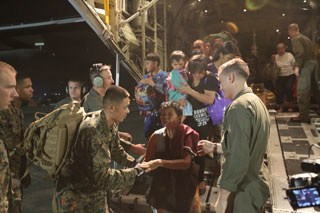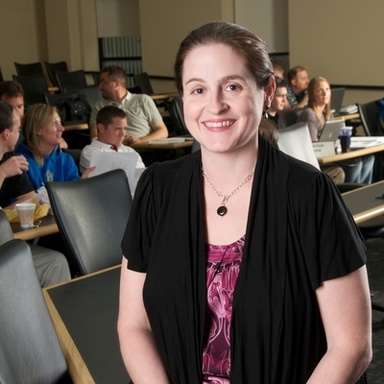
Typhoon Haiyan’s trail of destruction in the Philippines last weekend is drawing attention to the difficulty of providing relief services in a place where roads, ports, and airports are all but destroyed.
Ann Campbell, a professor of management sciences in the University of Iowa’s Tippie College of Business, is an expert on transportation logistics, and one of her research focuses is finding more efficient methods for governments, agencies, NGOs, and businesses to transport relief supplies to disaster areas.

Campbell is using the tools of her trade to find a better idea. Her specialty—vehicle routing—uses mathematical modeling and high-powered computing to develop quicker, more efficient ways to move something from one place to another.
Most of her research is aimed at helping businesses build supply chains that reduce transportation costs and increases profits. But few transportation logistics problems are as challenging as disaster logistics, which deal in many more unknown factors and turns the objective of supply chain management—maximizing profit—on its head.
“Commercial supply chains are focused on quality and profitability,” she says. “Humanitarian supply chains are focused on minimizing loss of life and suffering, and distribution is focused on equity and fairness much more than in commercial applications.”
Campbell started studying disaster logistics after the Indonesian earthquake and tsunami in 2004 wiped out a portion of Aceh Island and killed hundreds of thousands of people. For weeks, governments and international agencies struggled to bring relief supplies to a remote corner of a remote island where the disaster had taken out most transportation infrastructure.
The question took on added urgency when Hurricane Katrina hit the Gulf Coast in 2005 and Haiti’s capital Port-au-Prince was hit hard by an earthquake in 2010.
“The software used to route deliveries is focused on maximizing profits and minimizing costs, but that didn’t seem the most appropriate software to use when it came to getting people food and water,” she says.
Cambell’s current research is helping drivers learn what roads are still useable and which have become impassable as a result of the disaster, so that emergency workers will know before leaving the path least likely to be damaged.
“We want to give drivers a recommended path and some back-up options in case they encounter road failures,” says Campbell, who is working on the project with Tippie doctoral student Preethi Isaac. “In a disaster, it is important to recognize that information on road conditions is slow to come in. Also, cell phones usually don’t work so it is important to give drivers as much information as possible before they leave the depot with supplies.”
She said that Haiyan creates a whole new set of circumstances, not the least of which is that much of the damage was caused in remote areas that were difficult to access even before the storm.
One element of disaster logistics that Campbell and others are studying is where to locate pre-positioned supply depots in advance of a storm.
“If you put them too close to the coast, for instance, they might be destroyed by the storm, so you have to put them someplace that’s far enough away to be safe but no so far that it takes too long to get the supplies to the people who need them,” she says.